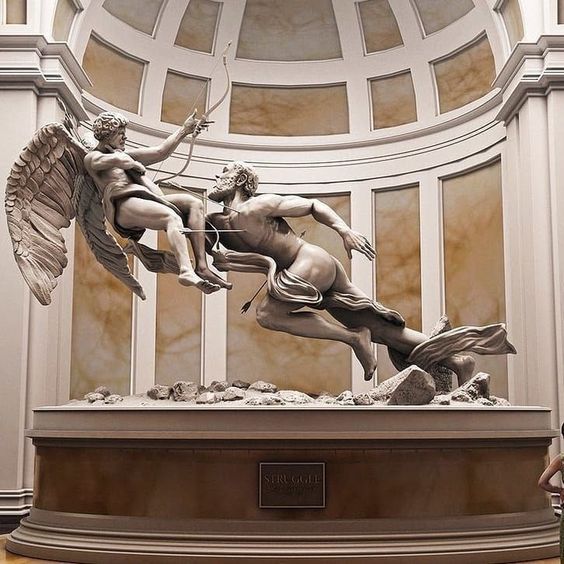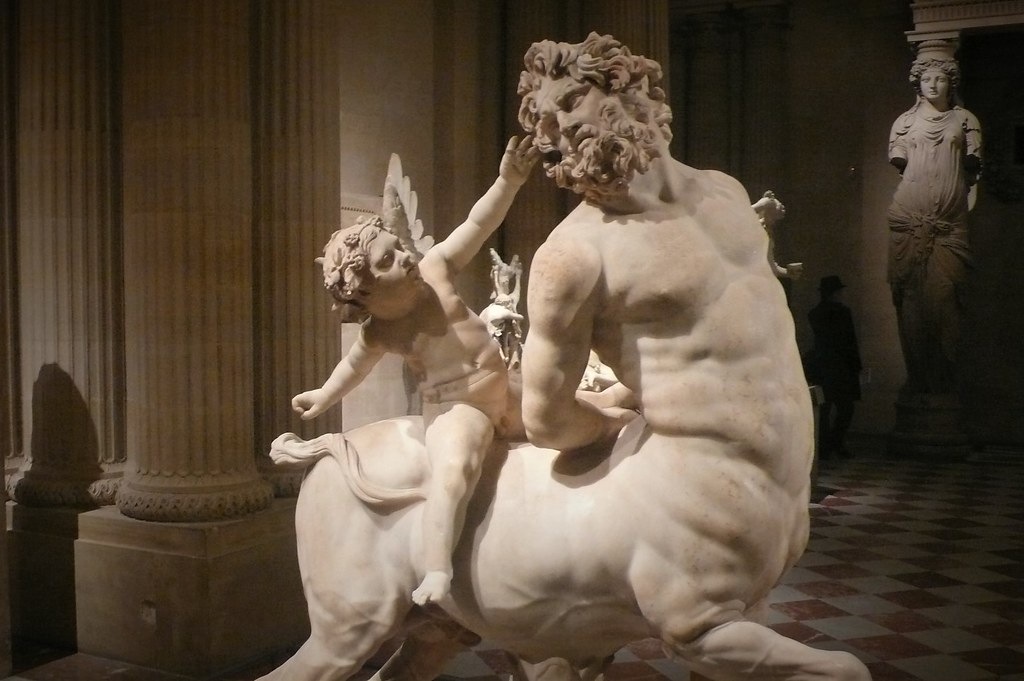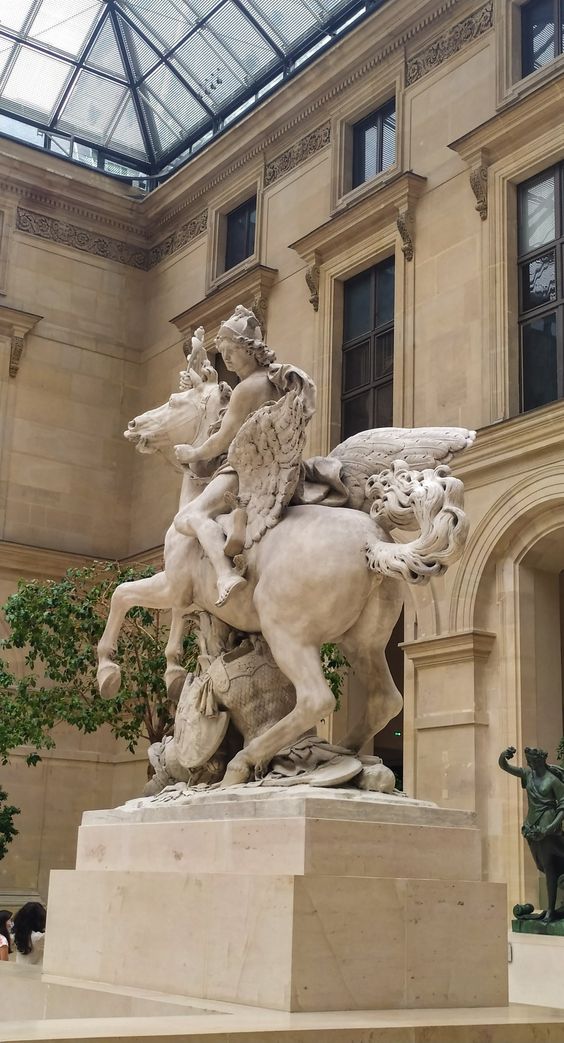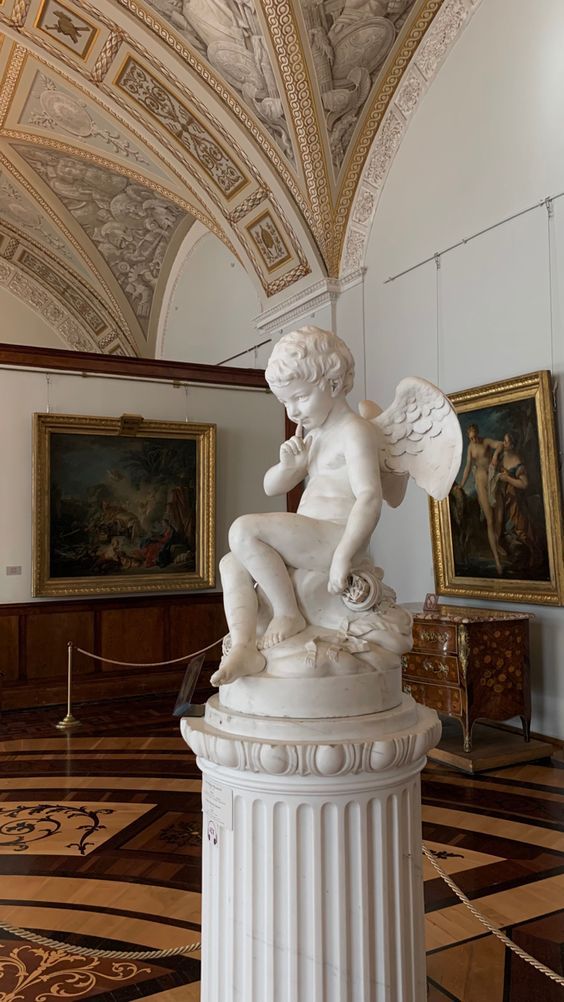A Roman marble statue depicting a centaur and Cupid (Eros) is housed in the Louvre Museum in Paris.

The marble Roman statue known as “Centaur with Amor (Eros)” stands as a captivating testament to the artistry and cultural exchange of the ancient world. Believed to be a copy of a Hellenistic original, this masterpiece dates back to the 1st to 2nd century CE, with the original creation likely originating in the 2nd century BCE. Currently housed at the Louvre Museum in Paris, this sculpture serves as a tangible link to the artistic traditions and mythological narratives of both ancient Greece and Rome.

At first glance, the statue immediately captures the viewer’s attention with its dynamic composition and intricate detailing. The centaur, a creature from Greek mythology with the body of a horse and the torso of a human, is depicted in a moment of interaction with Amor, also known as Eros, the Greek god of love. This interaction between the two figures adds depth and complexity to the sculpture, inviting viewers to contemplate the themes of love, desire, and the eternal struggle between the civilized and the untamed.

The craftsmanship exhibited in the statue is truly remarkable. The smooth, polished surface of the marble contrasts with the detailed rendering of the centaur’s musculature and the delicate features of Amor. Every curve and contour of the figures is expertly sculpted, imbuing them with a sense of lifelikeness and vitality. The artist’s skillful manipulation of light and shadow further enhances the dramatic effect of the composition, creating a sense of movement and drama that is both captivating and immersive.

But beyond its aesthetic appeal, the “Centaur with Amor” statue holds deeper significance within the context of ancient mythology and cultural exchange. In Greek mythology, centaurs were often depicted as wild and untamed creatures, symbolizing the primal forces of nature and the struggle between civilization and barbarism. Meanwhile, Amor/Eros represented the transcendent power of love and desire, capable of both uniting and dividing gods and mortals alike.

The juxtaposition of these two figures in the sculpture reflects the complex interplay of themes and ideas that characterized the ancient world. It speaks to the enduring human fascination with mythology, as well as the artistic techniques and traditions that evolved over time. As a copy of a Hellenistic original, the statue also underscores the interconnectedness of ancient cultures and the ways in which artistic motifs and ideas were transmitted and adapted across different civilizations.
Today, the “Centaur with Amor” statue continues to captivate and inspire visitors to the Louvre Museum in Paris. Its timeless beauty and profound symbolism serve as a reminder of the enduring legacy of the ancient world and the universal themes that continue to resonate with audiences across cultures and centuries. As we gaze upon this remarkable sculpture, we are reminded of the power of art to transcend time and space, connecting us to the rich tapestry of human history and experience